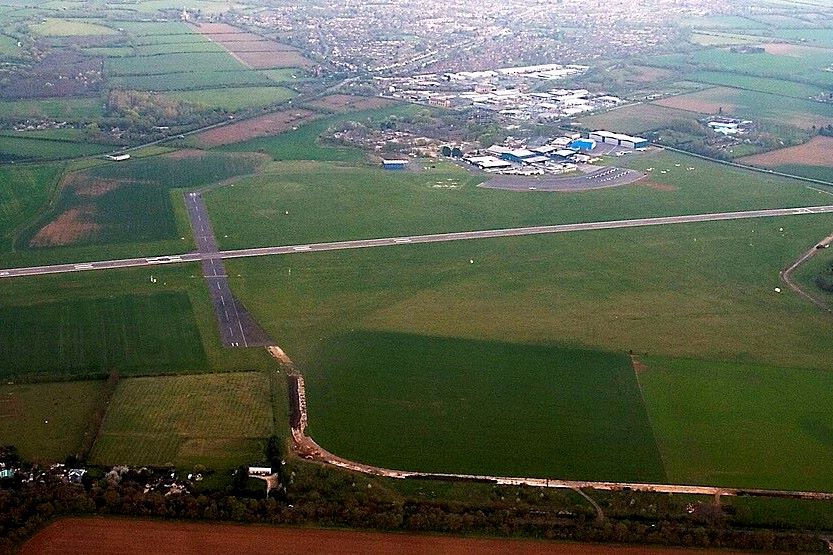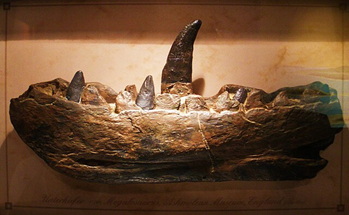In 1929, flying pioneer Alan Cobham launched his Municipal Aerodrome Campaign to encourage Town Councils to build local airports. He wrote to Oxford City Council’s Planning Committee but no action was taken at that time. Three years later, in 1932, an Oxford Times editorial argued that the City Council dealt with the question of a municipal aerodrome to serve the City of Oxford. The editorial suggested that, with the development of civil aviation, cities with aerodromes would benefit from mail and internal airline services.
It wasn’t until 1933 that Town Planning Committee recommended that the City Council approve, in principle, the establishment of a Municipal Aerodrome. In 1935, £20,000 was set aside for the purchase of land near Kidlington, 8 miles north of Oxford City centre, for development into an aerodrome. Three parcels of land were purchased; one from the Duke of Marlborough and two from farmers Frank Henman and G J E Bulford. In 1936, the Council formed an Aerodrome Committee under the Deputy Mayor, Councillor G C Pipkin.
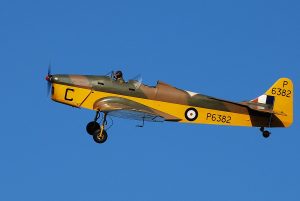
1939 Miles Magister, still flying with the Shuttleworth Collection rob_moments (photos · photo sets), CC BY 2.0, via Wikimedia commons
Although the aerodrome was intended to serve civil aircraft, the Royal Air Force (RAF) was under pressure to train pilots and the Air Ministry was offered a lease for a RAF Volunteer Reserve (RAFVR) flying training school. By 1938, the building of the aerodrome was proceeding well and the formation of No. 26 Elementary and Reserve Flying Training School was announced by the Mayor, Councillor Dr H T Gillett in the Assembly Room in Oxford. The first aircraft allocated were Miles Magisters, Hawker Hinds and Hawker Audaxes.
The City Engineer arranged for a circular concrete landing circle and applied to the Air Ministry for an aerodrome license as “Oxford (Campsfield) Civil Aerodrome”, Campsfield being close to Kidlington.
Despite progress, there were those against the aerodrome. Councillor Richard Crossman labelled the aerodrome as a white elephant and the University pressed for a ban of flying over the City of Oxford. The Town Clerk of Woodstock asked if flying over the town could be stopped during church services!
The Council was keen to form a civil flying club and this ambition was realised after the Government launched the Civil Air Guard (CAG), created to help people perform valuable aviation work in the event of war. The CAG offered a chance for subsidised flying and a contractor was appointed, General Aircraft Ltd, followed by the construction of a hangar. In July 1939, the Oxford Flying Club was opened in the presence of the Mayor of Oxford, Councillor Dr H T Gillett. Three Tipsy Trainer aircraft, a Belgian design, were purchased. The first trainee pilot to fly solo was Barbara Mary Nicklin.
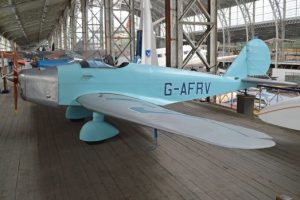
G-AFRV, one of the three original Tipsy Trainers of the Oxford Flying Club, now restored and preserved in the Brussels Air Museum. Alan Wilson from Stilton, Peterborough, Cambs, UK, CC BY-SA 2.0, via Wikimedia Commons
On declaration of World War II in September 1939, the aerodrome was requisitioned by the Air Ministry and became RAF Kidlington.
The Oxford Flying Club ceased operations but its parent company, Airtraining (Oxford) Ltd became an aircraft repairer under the national Civil Repair Organisation, alongside de Havilland at Witney and Morris at Cowley.
From a flying perspective, RAF Kidlington was used for advanced flying training using North American Harvards, Avro Ansons and Airspeed Oxfords. The airfield was bombed on occasion, with casualties to airport personnel.
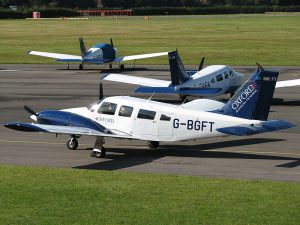
Piper PA34 of Oxford Aviation Training in 2007, Tl9380 at English Wikipedia
After the end of hostilities, civil flying recommenced although there was still petrol rationing and flying clubs were limited to 50 hours flying a month. However, a long period of post-war expansion began. In 1959, Oxford Aviation Ltd was established, merging in 1961 with Pressed Steel (the company founded by William Morris in Cowley), to create British Executive and General Aviation Ltd (BEAS). In 1963, the Oxford Air Training School (OATS) was formed from the flying training element of BEAS. The Airport, now called Oxford (Kidlington) went on to become a world-renowned centre of airline pilot training.
Flying training operations were so busy that in the late 1960s, aircraft movements came close to those of London Heathrow Airport at over 200,000 annually. At this stage the airport and all operations came under CSE Aviation Ltd, which in 1967 signed a 21-year lease from Oxford City Council but eventually purchased the freehold in 1981. Thus ended Oxford City’s ownership of the municipal aerodrome it founded in 1935. Now, an internet search for Oxford Municipal Airport will reveal a site in Oxford, Kansas, USA!
Today, the airport is privately owned and is known as London Oxford Airport. It is a thriving centre of Business and General Aviation and continues its association with flying training, both private and professional.
Written by Graham Forbes, MoX Volunteer
Want to write your own Oxford-inspired post? Sign up as a volunteer blogger.
References:
The History of Oxford Airport by Geoff Phillips, Bookmarque Publishing, 1996
The Author’s experience as Flying Instructor and Manager at Oxford Airport, 1987-1
